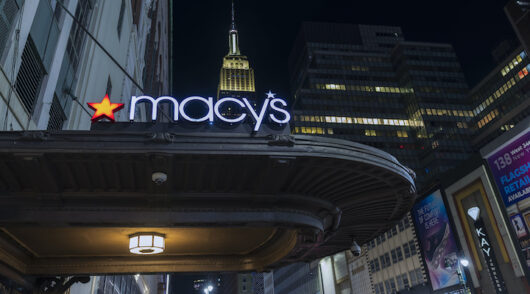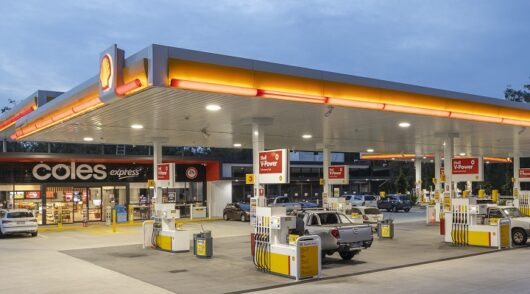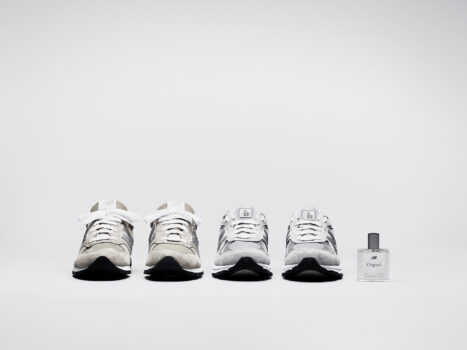 Less than a year after acquiring Australian Geographic from the Myer family, The Co-op chairman Joe Merhi and his CEO Thorsten Wichtendahl are looking to add another brand to the member-owned company’s retail stable.
Less than a year after acquiring Australian Geographic from the Myer family, The Co-op chairman Joe Merhi and his CEO Thorsten Wichtendahl are looking to add another brand to the member-owned company’s retail stable.
The pair have spent the last eight months effectively doubling the size of the business by integrating Australian Geographic’s network of 66 stores, improving its product offer and implementing digital services to turn the brand around.
Speaking exclusively to IRW, Wichtendahl and Merhi said AusGeo is now back to black and that the company’s network of more than 120 stores was now ready for the addition of another strong Aussie name.
“From a sales perspective AusGeo is now the jewel in the business, we’ve turned it around and it’s growing quite healthily,” Wichtendahl said.
“We see Australian Geographic as the second brand we’ve acquired, I’d be delighted to find another Australian icon and bring it into our portfolio to extend our offering and member value proposition.”
Merhi said an active search for a business that aligns with The Co-op’s brand proposition is currently underway, laying out a vision for the company that goes far beyond its humble beginnings as a university bookshop co-operative in the 1950s.
“Diversification is what’s going to protect us from almost certain disruption and transformation of the retail landscape,” Merhi said. “A strong iconic Australian brand is really what helps you build that separate identity.”
Charting growth amid disruption
Wichtendahl, who joined the business as COO in 2011 to oversee an expansion from 39 to 65 bookshops, has set out his desire to make the cooperative one of Australia’s top 100 retail brands. The Co-Op currently more than two million members signed up.
However, national textbook sales are declining by 10 – 20 per cent per year as universities move away from physical books, materially impacting what’s been the core of the bookshop’s business since its founding.
Wichtendahl and Merhi are now tasked with getting the core element of the campus-based business back on track, positioning it for future success, while also trying to maintain the values the retailer was founded on – providing affordable university supplies to students.
They have responded by simultaneously adopting two intertwined strategies – diversifying the product range with lines like university specific apparel, wearable technology and a limited general book range; as well as developing an omnichannel model that includes click-and-collect, mobile and buy-now-pay-later.
After emerging an early mover on click-and-collect across its university sites several years ago, The Co-op is now preparing to launch the service for AusGeo in the next two months and has embraced buy-now-pay-later with open arms.
“If you need to buy $600 in nursing textbooks or a telescope, it’s quite compelling to pay it in instalments, particularly for students,” Wichtendahl said.
Complementing that are 190 new digital screens recently installed across AusGeo stores and mobile functionality that can provide customers in proximity to a store with timely promotional offers.
The Amazon effect – the potential
Diversification is well-progressed across product categories and shopping channels. Seventeen per cent of the co-op’s sales are made online, 30 per cent of which are done via mobile, and a further 12 per cent are attributed to corporate accounts.
Wichtendahl, who has cast a watchful eye on the progress of Amazon’s entry into the Australian market, is backing this combination of product and channel diversity, which he says will leave the cooperative better placed to deal with the American e-commerce giant than many other traders.
“Our traditional peers will be more shocked than we are,” he said. “We’ve been competing with Amazon for well over a decade now, through their UK subsidiary Book Depository, which has sold a significant number of textbooks into the Australian market.”
“Our point of difference is blending physical and digital. There are so many pureplay book retailers that are more exposed to Amazon’s offer – there’s very little they can do that Amazon can’t.
“Then there are physical retailers like Dymocks, which have well over 90 per cent of their revenue still coming from physical stores.”
The Co-op hopes to tackle Amazon head on, hopefully with the addition of another brand to bolster the ranks in a similar vein to the strategy taken by Catch Group, which acquired Pumpkin Patch earlier this year, and Kogan, which acquired the Dick Smith brand last year.
The company’s other differentiating asset is its portfolio of university campus locations, which offer it unrivalled access to the key 15-35 demographic – the age group most likely to be Amazon Prime members in the UK and US.
Merhi said The Co-op has adopted an “opportunistic” approach to product diversity on campus, borrowing a page from Myer CEO Richard Umbers’ philosophy on customer centricity, noting that campuses – which are often communities of their own – require localised retail models that must adequately cater to specific market needs.
Indeed, there could be a future where textbooks are no longer the core focus for the cooperative on campus as the business, which has been experimenting with operating cafes for some time, looks at convenience as a potential growth vertical.
“It just makes sense to be the café operator or potentially even run a convenience-style outlet where we focus predominantly on a product offering that looks like a 7-Eleven and the textbooks are at the back of the shop,” Wichtendahl explained.
However, there is still a way to go ‘til the the cooperative is on the list of Australia’s top 100 retail brands. For now, Wichtendahl is proud to say that his omnichannel strategy has landed the bookshop in the top 50 online retailers, something that he’s hoping to replicate with Australian Geographic in the near future.





